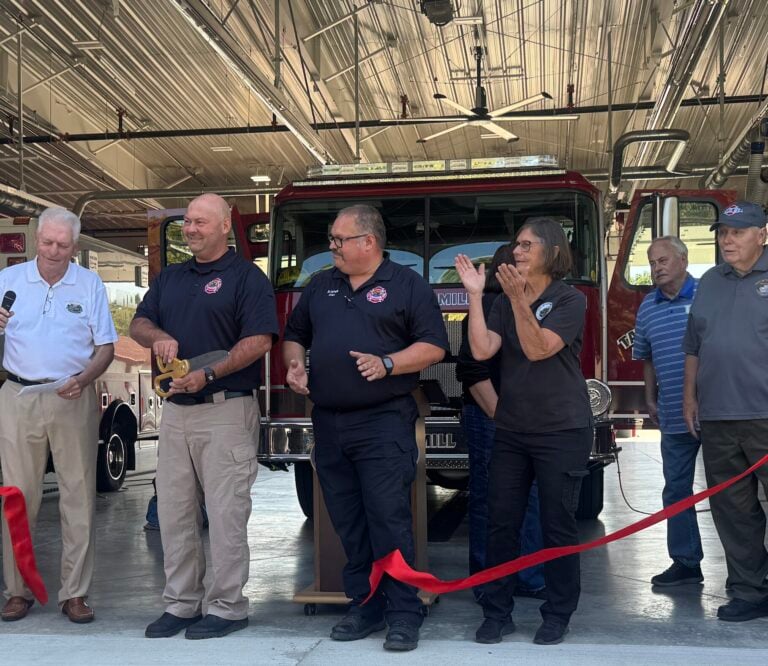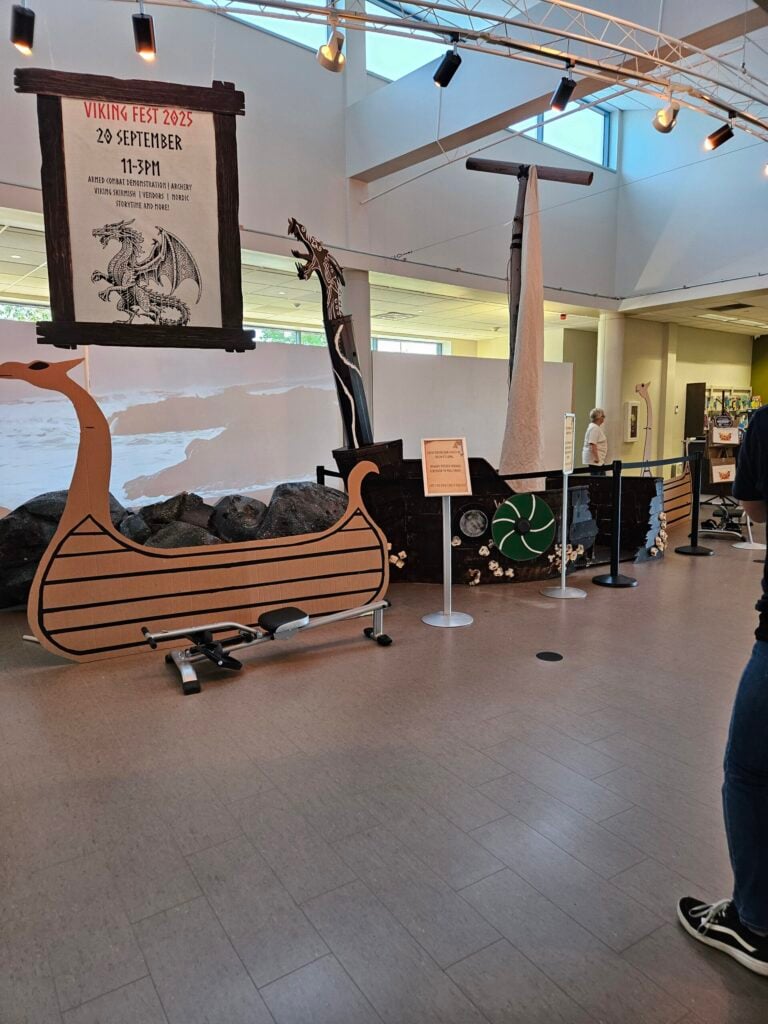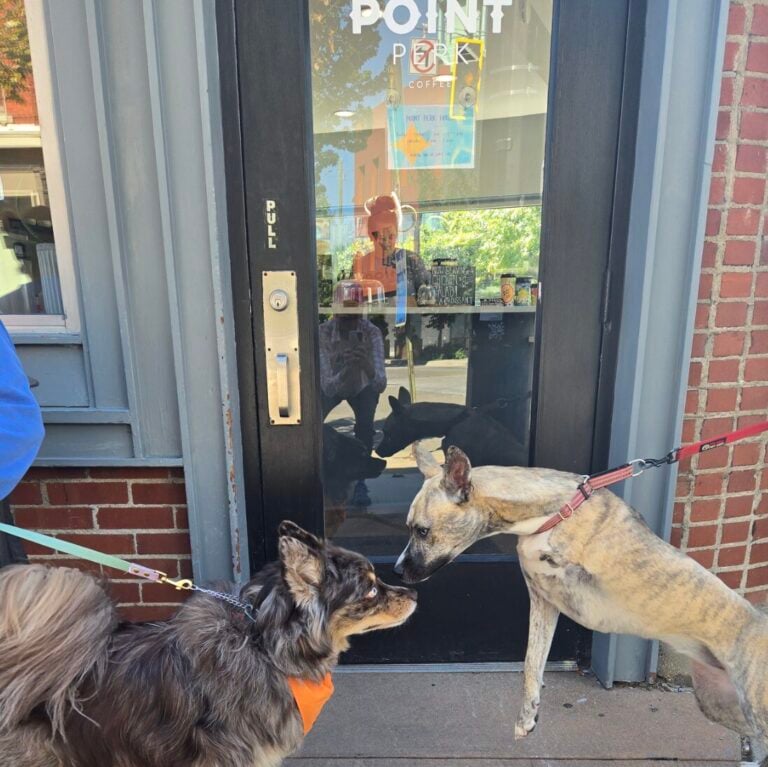Editor’s note: Part 5 of an occasional series about fast food restaurants.
By Paul A. Tenkotte, PhD
Special to NKyTribune
In 1955, Louis “Lou” M. Groen of Cincinnati was attending the National Restaurant Show, held in Chicago. He drove his car to suburban Des Plaines, Illinois, where he met Ray Kroc, franchise agent for McDonald’s Hamburgers. He asked Kroc about the possibility of a franchise for the Cincinnati area. Kroc referred him to his first successful franchisee, Sanford (Sandy) Agate, who had just opened a McDonald’s in Waukegan, Illinois, an industrial suburb halfway between Chicago and Milwaukee.

In McDonald’s: Behind the Arches, author John F. Love relates the “meat” of the story: “Groen was immediately impressed by the line at Agate’s restaurant, and he walked in to meet the operator. ‘I’ve paid off my entire investment in a few months.’ Agate bragged. But Groen was in the restaurant business, and he knew restaurants were not that profitable. ‘You’ve gotta show it to me before I will believe anything you say,’ Groen insisted. ‘If you’re so successful, show me your damn tax return.’” Agate agreed, and Groen was impressed. While Groen “did not know it then, the wealth he would accumulate in McDonald’s would be many times greater than Agate’s” (John F. Love, McDonald’s: Behind the Arches. New York: Bantam Books of Random House, 1995 ed., p. 83).
Lou Groen was no stranger to the restaurant business. After serving in World War II, Groen returned to his hometown of Cincinnati. His father-in-law, Harry L. Wuest (a former professional boxer who died in 1964), had owned Podge Y’s Café at 611 Elm Street in Cincinnati. In September 1951, Groen purchased the popular Hub Café at 42 East Fifth Street in Cincinnati, long known for its slogan “Meet me at the Hub.” By 1957, Groen became director of the Cincinnati Restaurant Association (CRA), following the resignation of James Kent of the Hitching Post. Lou later served as vice president and president of the Cincinnati Restaurant Association of Greater Cincinnati and Northern Kentucky (“Hub Changing Hands,” Cincinnati Post, September 8, 1951, p. 11; Bill Styles, “Styles Meets Styles,” Cincinnati Post, September 14, 1957, p. 20; “National Restaurant Month,” Cincinnati Post, October 3, 1958, p. 20; “Meet Julia,” Cincinnati Post, December 12, 1958, p. 28; “Restaurant Week is Coming Up,” Cincinnati Post, August 28, 1959, p. 34).

Lou Groen’s Cincinnati-area McDonald’s franchise was one of the company’s earliest and most successful. In addition, it was one of only a few metropolitan areas that had “territorial agreements” with Kroc. In these, “Kroc did not sell territorial rights; he gave them away. Nor did his territorial agreements give franchisees the right to build as many new McDonald’s units in their territories as they chose to build. His territorial franchisees merely had the right to obtain additional stores if McDonald’s chose to put additional stores in their territories. They could keep McDonald’s from granting stores to anyone else in their territories, but they could not demand new stores for themselves” (Love, pp. 59-60).
In January 1959, Lou Groen opened his first Cincinnati-area McDonald’s at North Bend and West Fork Roads in Montfort Heights. However, there were two challenges. Cincinnati was a very Catholic city, and McDonald’s only offered beef on their menu at the time. And in the 1950s and early 1960s, before Vatican II, Catholics were required to abstain from meat on all Fridays of the year, as well as on some additional holy days (Matthew Plese, “Fasting Changes at the Turn of the Century,” Fatima Center, fatima.org).

Groen realized that Catholic customers, abstaining from meat on Friday, “were bypassing his McDonald’s in favor of a nearby Frisch’s restaurant, one of the full-service drive-ins owned by Dave Frisch, the area’s Big Boy franchisee. Frisch served a popular halibut sandwich, and Groen was convinced that the business McDonald’s was losing to Frisch’s on Fridays was affecting his unit on other days as well” (Love, p. 226; Paul Clark, “Filet-O-Fish Inventor Lured Patrons,” Cincinnati Enquirer, February 19, 2007, pp. A1, A11). (See also: Our Rich History: Frisch’s Big Boy plays major role in history of fast-food restaurants in NKY — and beyond)
Groen asked for permission to add fish to his McDonald’s menu but was initially denied by corporate headquarters in Chicago. Persistent, Groen “marshaled statistics on fish sales of competitors, estimated the sales he had lost for lack of a fish product and calculated the costs involved in adding one. He prepared an audiovisual slide presentation to demonstrate how a fish product could be cooked at a McDonald’s unit. He then flew to Chicago to make the pitch to McDonald’s managers and to cook for them the fish sandwich he proposed—halibut, dipped in a pancake batter, deep fried, and served on a bun.” Somewhat reluctantly, they accepted his proposal (Love, p. 226).

The rest was history. McDonald’s Filet-O-Fish sandwich was born in 1962, and the company became the “first major commercial account” of fish supplier Gorton’s. Groen’s bet had paid off, as his “average gross on Friday soared from $100 to as much as $500, and the Friday fish trade helped boost hamburger sales the rest of the week. Within two years, the volume at his once-struggling restaurant climbed 30 percent. Groen says: ‘Fish was the only thing that saved me from going broke’” (Love, pp. 226-227; Steven Drucker, “McDonald’s thrives despite its arch rivals,” Columbus Dispatch, March 24, 1996, p. 45).
Late in 1959, Groen announced the construction of a second Cincinnati-area McDonald’s unit. Located at 7916 Montgomery Road, opposite the new Kenwood Shopping Center, it opened in May 1960 (“The Town’s Talking,” Cincinnati Post, January 15, 1959, p. 7; “Second McDonald’s,” Cincinnati Post, October 30, 1959, p. 26; “Manager Named at McDonald’s, Cincinnati Post, May 27, 1960, p. 45).

Groen’s third area location was actually his first unit in Northern Kentucky. Located at 3050 Dixie Highway in Erlanger, it opened in April 1961. A 12-piece Scottish bagpipe band performed a five-hour concert for the grand opening. One year after its opening, the Erlanger location had sold “800,000 hamburgers.” At the same time, the national chain of McDonald’s restaurants totaled “345 units in 38 states,” having sold over “600 million hamburgers.” Four years later, the Erlanger unit estimated that it had “served up 3.2 million burgers.” Erlanger was followed by a fourth location, 6291 Glenway Avenue in Cincinnati, constructed and opened in late 1964 (“McDonald Anniversary is Planned,” Kentucky Post, April 9, 1962, p.3K; “Flying Bridge Added to Tavern,” Cincinnati Post, April 2, 1965, p. 32; “Drive-In Building 4th Unit Here,” Cincinnati Post, August 4, 1964, p. 2).
A second McDonald’s in Northern Kentucky (the fifth in Groen’s franchise) opened at 1930 Alexandria Pike in Newport in 1966. By that time, Groen’s grand opening celebrations included a ribbon of fifty $1 bills, cut by an area notable, who then donated the $50 to an area charity of their choice. In Newport, colorful Mayor Johnny “TV” Peluso cut the ribbon.

Groen’s sixth unit, at 27 Calhoun Street in Clifton, opened in September 1966, again featuring the $50 ribbon ceremony. The ribbon cutter was University of Cincinnati athletic director, George Smith (“Ribbon of $ Bills at McDonald Opening,” Cincinnati Post, September 9, 1966, pp. 12-13).
In 1969, Groen stepped up his game in Cincinnati. With the opening of his seventh area location at 7681 Beechmont Avenue, there was now a “New-Unique 176 Seating Capacity Inside,” “completely air conditioned for your dining pleasure.” The dining room, located in the “former Judd Motors auto agency,” was one of the largest in the national chain at the time. The grand opening featured an appearance by the chain’s clown mascot Ronald McDonald (ad for grand opening, Cincinnati Post, June 20, 1969, p. 23; “Dining Out,” Cincinnati Post, June 13, 1969, p. 20).
Likewise, as a sign of changing times, Groen’s eighth location at 4871 Reading Road in Avondale “featured a 90-seat dining room.” It opened in November 1969 (“Dining Out,” Cincinnati Post, November 14, 1969, p. 37; ad, grand opening, Cincinnati Post, November 21, 1969, p. 6).
Eventually, Groen’s Cincinnati-area McDonald’s franchise included 43 locations. In 1986, he sold his restaurants. However, that is not the end of the story. Lou’s son, Paul, who started to work for his father at the Montfort Heights location, has rebuilt a McDonald’s empire of his own, Archways Bluegrass, that now operates 30 McDonald’s locations in Kentucky, Ohio, and Indiana. To this day, I make the conscious effort to bypass several other units to enjoy a Quarter Pounder at one of my favorite Groen locations (Paul Clark, “Filet-O-Fish Inventor Lured Patrons,” Cincinnati Enquirer, February 19, 2007, pp. A1, A11; “The Groen Family Business,” Archways Bluegrass.

Paul A. Tenkotte, PhD is Editor of the “Our Rich History” weekly series and Professor of History and Gender Studies at Northern Kentucky University (NKU). He also serves as Director of the ORVILLE Project (Ohio River Valley Innovation Library and Learning Enrichment). For more information see orvillelearning.org
















